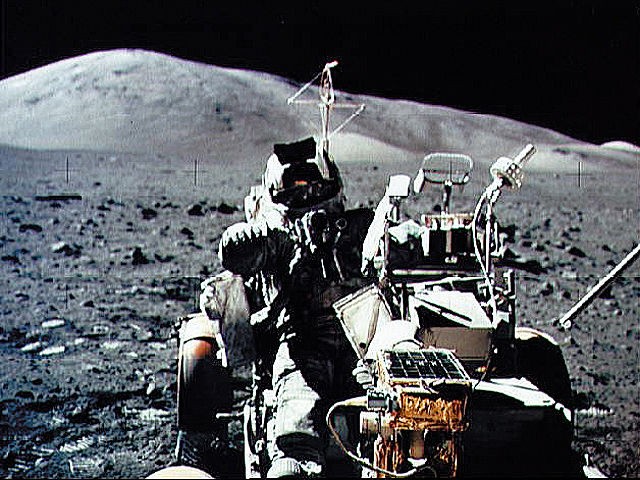Bill Gray, an asteroid hunter has been keeping tabs on a rocket since its 2015 launch. This month, he realized his orbit-tracking software predicted the 4-tonne booster will cash into the surface of Moon on March 4.
A Space.com report specified that the crash that's about to happen will be moving at "more than 9,000 kilometers per hour."
The rapid-moving rocket is the upper stage of a SpaceX Falcon rocket, which lifted the Deep Space Climate Observatory satellite off the Earth. It has been wildly looping around this planet and the Moon ever since.
The booster is tumbling chaotically as it travels, adding some uncertainty to the location and timing of the forecasted impact. It is possible to take place on the far side of the moon and thus, it will not be visible from Earth.
ALSO READ : Moon Exploration: SIU Engineering Students Win NASA's Competition to Design Mining Robots

Lunar Landing
Some astronomers claim that the collision is "not a big deal," although, to some space archeologists, it is certainly exciting. This will be the newest archeological site of the moon, joining over 100 other sites documenting human activity on the moon and in "cislunar" space.
According to The Conversation, where this lunar landing was first reported, the effect will leave a new crater on the moon's dark side.
The very first artifact that made many humans make contact with the moon was the 1959 Soviet Luna 2, a unique achievement, as it was just two years after the launch of the first artificial Earth satellite known as the Sputnik 1, as described in a separate Space.com report.
The mission comprised a rocket, three "bombs", and a probe. One bomb emitted a loud of sodium gas to allow the crash to be visible from Earth. The USSR on the other hand did not want the groundbreaking mission to be called "a hoax."
The remaining two bombs were spheres of pentagonal medallions engraved with the Soviet symbols and dates. If the explosions take place as planned, they are expected to scatter 144 medallions throughout the surface of the Moon.
Previous Rocket Landings
Other rocket landings have been considered "missions gone wrong." One of these failed landings is the Israeli Beresheet lander in 2019.
This was particularly controversial as the lander reportedly carried "secret cargo of dried tardigrades," small creatures that could be revived through the water's presence.
Numerous spacecraft have naturally corroded and fallen out of orbit. This was a similar occurrence to that of the Okina Japanese relay satellite in 2009.
Meanwhile, the Ebb and Flow spacecraft of NASA were purposely crashed in 2012 into the lunar south pole, particularly to prevent any risk of harming the Apollo landing sites. Impacting at a 6,000-kilometer-per-hour speed, the spacecraft left craters six meters across.
Lastly, a lot of crashes have been used to gather seismic data. Observations from the controlled impact of the Saturn third-stage boosters, as well as the ascent modules from the Apollo missions, were specifically valuable because location, timing, and impact energy were identified.
Report about this moon landing is shwon on TODAY'S YouTube video below:
Check out more news and information on Moon in Science Times.
© 2025 ScienceTimes.com All rights reserved. Do not reproduce without permission. The window to the world of Science Times.












